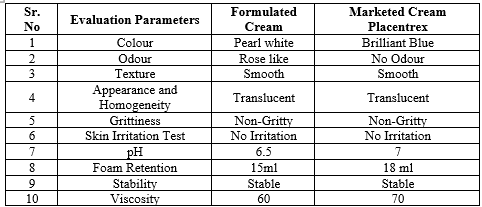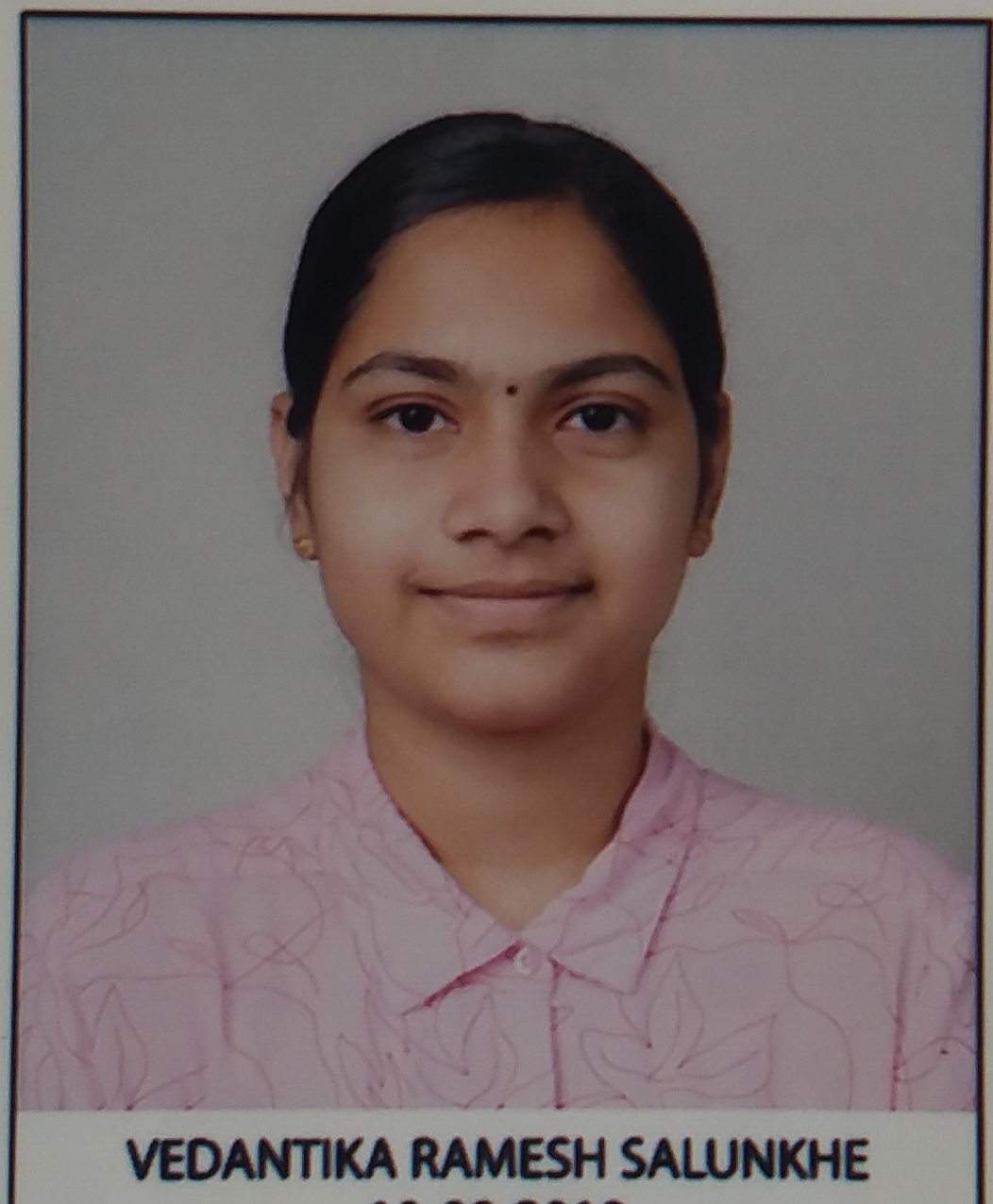Abstract
The formulation and evaluation of an herbal cream for wound healing was the goal of the current research project. Wounds are physical injuries that cause a break or opening in the skin and alter the normal structure and function of the skin. A variety of medications and formulations for the treatment of Vrana (wounds) have been described by Acharya Sushruta. In Sushsruta Samhita, a formulation for healing wounds by the name of Ropana Taila is mentioned. For thousands of years, people have employed herbal treatments to heal and treat wounds. A Siddha taila known as Vranropantaila is utilized in Ayurveda to treat wounds and have anti-marking properties. There are sixteen components of herbal and mineral origin in it. It is created using a unique method that is mentioned in Ayurveda. However, due to poly-herbal formulation, it becomes difficult to standardize. The goal of the current research article is to discuss Ropana Taila's work in wound healing.
Keywords
Ropan Tail, Herbal Cream, Wounds, Healings
Introduction
From ancient times many herbal Ayurveda preparations have been used in the management of different types of wounds. ‘Ropan Tail’ is an ayurvedic preparation which has been used traditionally to promote wound healing of clean wounds. The present study was undertaken to determine the wound healing potential of Ropan tail. As it is less oily, messy and sticky, most patients find it more user-friendly. [1] Ropana Taila is explained in Sushruta Samhita chapter 37 verse 26. [2] It's used to heal crack. It contains Harridan (Curcuma longa), Daruharidra (Berberis aristata), Devdaru (Cedrus deodara), Priyangu (Callicarpa acrophylla), Agar (Aquilaria agallocha), Tagar (Valeriana wallichii), Lodhra (Symplocos racemosa) and Til Taila (Sesamum indicum). utmost of the herbal medicines presents in Ropana Taila have katu, tikta rasa and have anti seditious, analgesic and immunomodulatory action [2] “Vranaropantaila” is Siddha taila used in Ayurveda for wound healing with anti-mark potential. “Vrana” means wound and “Ropana” means healing. It is useful in the rapid healing of the wound. Vranaropantaila is a reputed Ayurvedic formulation which is used for wound healing treatment. [3] A wound is an interruption to skin integrity caused by physical trauma or disease or break of the skin that cause disturbance in the normal skin anatomy and function. [4]
Wound healing is defined as a complex and elaborate biological action which start off in response to an attack on normal healthy skin. [5]
The crack mending process consists of four largely integrated and lapping phases hemostasis, inflammation, proliferation, and towel redoing or resolution. [6] Creams are semisolid emulsions intended for application to the skin or mucous membrane. A low fat moisturizer that disappears into the skin is called as vanishing cream. It softens skin, leaving nothing behind. [7] Vanishing cream are o/w emulsion based preparations containing aqueous phase and oil phase. [8]
Types of skin creams:
There are two categories for them. Oil painting-in-Water (O/W) creams are made up of tiny drops of oil painting scattered throughout a continuous phase. Another type of oil painting-in-Water (O/W) conflation is when the oil painting is scattered as droplets throughout the waterless phase. Water-in-oil painting (W/O) creams are made of tiny water droplets scattered throughout a continuous, velvety phase. The conflation is of the water-in-oil painting (W/O) type when the dispersed phase is water and the dissipation medium is an oil painting. [9-11]
MATERIAL:

The cream was formulated using vrana ropan tail as active pharmaceutical ingredient and petroleum jelly, paraffin wax, methyl paraben, rose oil as excipients. As mentioned in Ayurvedic text Ropana Tailais used in wound healing. It has antimicrobial, anti-inflammatory and analgesic action which makes it suitable to use in wound. Phytochemical constituents of ingredients of Ropana Taila also add to its Ropanaaction. [12] The vrana ropan tail used in formulation is manufactured by "Aushadhi bhavan, Ayurved seva sangh"

Fig 1. Marketed Product (Vranaropan Talia)
Petroleum has a wide range of uses in dermatology, as a carrier for medicated ointments, and a standalone treatment. Its nonflammable, non comedogenic, and rare allergic properties [13]
Paraffin wax is a white or colorless soft, solid wax. It’s made from saturated hydrocarbons. It’s often used in skin-softening and lubrication.
METHOD:
Creams are semisolid formulations widely acceptable by the society. The skin is the most accessible part of the body and as such is also highly vulnerable to injuries. In case of cuts, burns and wounds, topical formulations such as creams are the most preferred for treatment and [14] Forms of medication of creams Trituration Levigation, Fusion method We used trituration system for geometric and homogenous mixing of all the excipients and the herbal oil. The cream was prepared by using the other excipients that's, Petropetroleum jelly, paraffin wax, methyl paraben, rose oil. [15] By using trituration method, we have developed three batches of our herbal cream, namely F1H, F2H, and F3H. All three batches were evaluated for different parameters like appearance, PH, viscosity, phase separation.
Lab Work:
Trial batches:
For trial batches, dissolving cream formula was used. The cream base consists of stearic acid, cetyl alcohol, triethanolamine, sodium hydroxide, glycerin, water, incense and preservative. Both the oil and water phase was mixed at constant temperature of 70 ° c with nonstop stirring. Then the cream was allowed to cool with constant shifting. A homogeneous cream was formulated. Upon storehouse for a period of 1 month the oil oozed out of the cream and therefore the expression was changed.

Final formula:
A new formula of paraffin wax, petroleum jelly and preservatives, perfume was made into batches Formulation A, Formulation B, Formulation C. [15]

Fig no 2 . Prepared Formulation (Cream)
Physical Evaluation:
Determination of pH: The pH of the cream can be measured on a standard digital pH meter at room temperature by taking adequate amount of the formulation diluted with a suitable solvent in a suitable beaker. The pH of the cream was found to be in the range between 5-6.

Organoleptic properties:
Colour:
Oyster white
Odour:
Rose like
Spread ability: Adequate volume of sample is taken between two glass slides and a weight of 20 gm is applied on the slides for 10 seconds. Spreadability can be expressed as,
S = m × l/ t
Where, m-weight applied to upper slide, 1-length moved on the glass slide, T-time taken.
Spreadability was found to be 33.94 gcm/sec

*All above readings are in triplicate and SD taken
Viscosity:
Viscosity of formulated creams can be determined by using Brookfield Viscometer. Viscosity was set up to be 1916.6 mPa.s

*All above readings are in triplicate and SD taken
Homogeneity:
The formulation was tested for the homogeneity by visual appearance and by touch and it was found to be homogeneous without any gritty particles.
Removal:
The ease of removal of the creams applied was examined by washing the applied part with tap water.
Dye test:
The scarlet dye was mixed with the cream and a drop of cream is placed in a slide and covered with a cover slip and examined it under a microscope. The dispersed globule appeared red so the cream was confirmed as o/w type.
After feel:
Emolliency, slipperiness and amount of residue left after the application of fixed amount of cream was checked.
Type of smear:
After application of cream, the type of film or smear formed on the skin were checked.
COMPARISON OF HANDWASH WITH OTHER COMMERCIAL PRODUCTS

RESULT:
The oil was used and formulated 3 different formulations named F1, F2 and F3. These formulations are safe to use for skin. We have checked the various parameters of the evaluation test. After completing & checking the evaluation parameters, we have seen that the Formulation A showed good consistency, appearance, pH, no signs of phase separation, and simple removal.
Discussion: In a discussion, we’ve prepared a special batch of herbal cream that doesn’t cause any side effects or adverse reactions using the vrana ropan oil. The herbal vanishing cream was prepared by using o/w emulsion method using mixture of vrana ropan oil, paraffin wax, petroleum jelly.
CONCLUSION:
The vanishing cream of vrana ropan oil with the best properties and having nutritional value was to be prepared by simple methods and less equipment are required. The prepared herbal cream also has anti inflammatory and antibacterial activity due to this it is used in wound healing. Further studies are required for this vanishing herbal cream. It was found that this type of formulation of the vanishing herbal cream was not prepared earlier. Oil in water emulsion-based cream was formulated using natural ingredients and was evaluated. By combining all these ingredients, it can be concluded that this cream can be used as a wound healing cream and the ingredients mixed can produce synergistic effect of the other. Further studies can be carried out on stability and skin irritancy test of the cream.
REFERENCES
- KM Ho. Proper Choice of Base of Topical Medicaments. Medical Bulletin.2006; 11(9): 7-8.
- https://ijapr.in/index.php/ijapr/article/view/2274/1603
- https://ijpsr.com/bft-article/quality-assessment-of-vranropan-taila-an-ayurvedic-siddha-taila-for-wound-healing-and-anti-mark-property/
- Introduction - Wounds research for patient benefit: a 5-year ... - NCBI https://www.ncbi.nlm.nih.gov/books/NBK379919/45
- Ali A, Garg P, Goyal R, Kaur G, Li X, Negi P, Valis M, Kuca K, Kulshrestha S. A Novel Herbal Hydrogel Formulation of Moringa oleifera for Wound Healing. Plants. 2021 Jan;10(1):255
- 4.Guo SA, DiPietro LA. Factors affecting wound healing. Journal of dental research. 2010 Mar;89(3):219 - 29.
- Pawar A, Gaud RS.Modern Dispensing Pharmacy. Career publication, Second edition, April 2005; 227.
- Das K, Dang R, Machale MU, Ugandar RE, Lalitha BR. Evaluation for safety assessment of formulated vanishing cream containing aqueous Stevia extract for topical application. Indian Journal of Novel Drug Delivery.2012; 4(1):43-51.
- Mohiuddin AK, “Skin Care Creams: Formulation and Use” American Journal of Dermatological Research and Reviews, 2019, 2:8
- Chapter 11. Semi-solid dosage forms. In: Alekha Dash, Somnath Singh, Justin Tolman. Pharmaceutics: Basic Principles and Application to Pharmacy Practice, published by Academic Press, 2013 ISBN 0123868912, 9780123868916
- Swarbrick J, Rubino JT, Rubino OP. C hapter 22. Coarse Dispersions. In: Remington: The Science and Practice of Pharmacy Volume 1, edited by David B. Troy, Paul Beringer, published by Lippincott Williams & Wilkins, 2006 ISBN 0781746736, 9780781746731
- Review on Wound Healing Activity of Ropana Taila https://ijapr.in/index.php/ijapr/article/view/2274
- 13]https://www.sciencedirect.com/science/article/abs/pii/S019096222011076
- Creams: A Review on Classification, Preparation Methods, Evaluation ... https://www.researchgate.net/publication/346395733_Creams_A_Review_on_Classification_Preparation_Methods_Evaluation_and_its_Applications145
- A handbook of cosmetics by B.M.Mithal and R.N. Saha


 Pallavi Nagorao Somthane*
Pallavi Nagorao Somthane*
 Vedantika Ramesh Salunkhe
Vedantika Ramesh Salunkhe
 Anand Anil Jadhav
Anand Anil Jadhav








 10.5281/zenodo.13372054
10.5281/zenodo.13372054